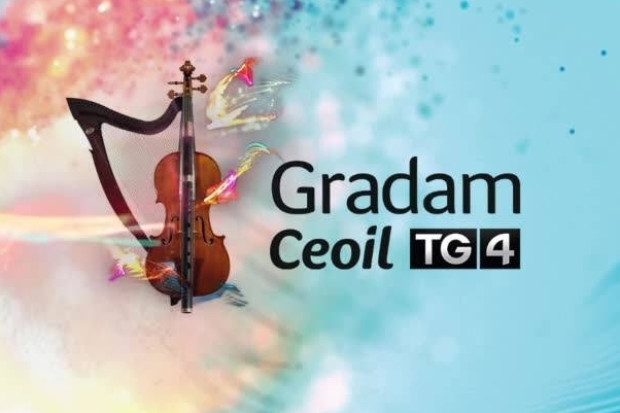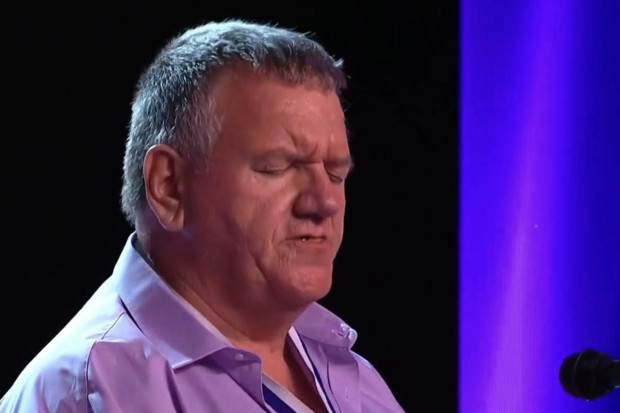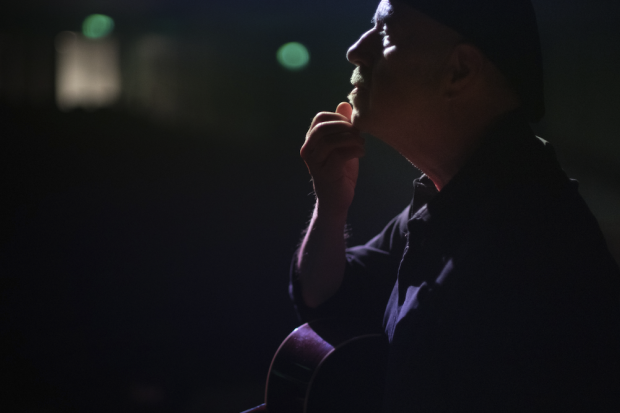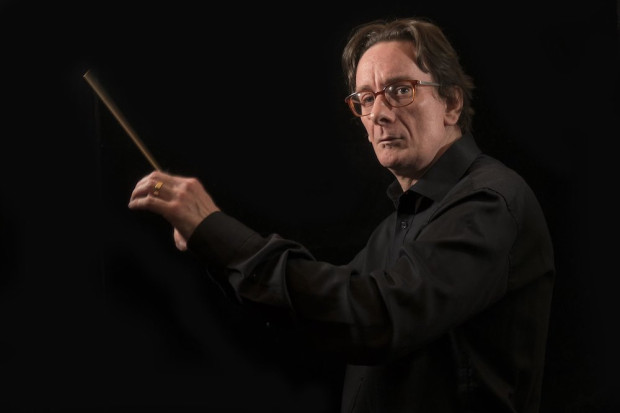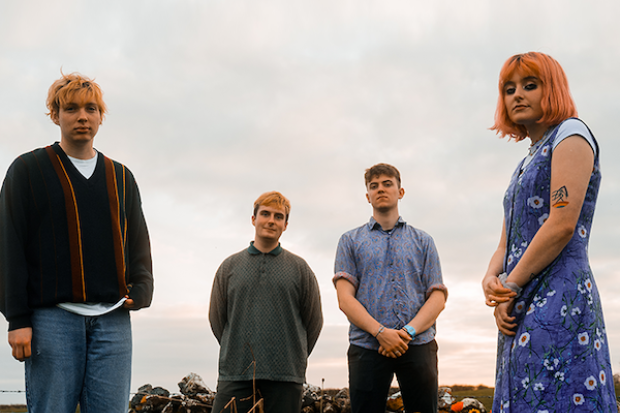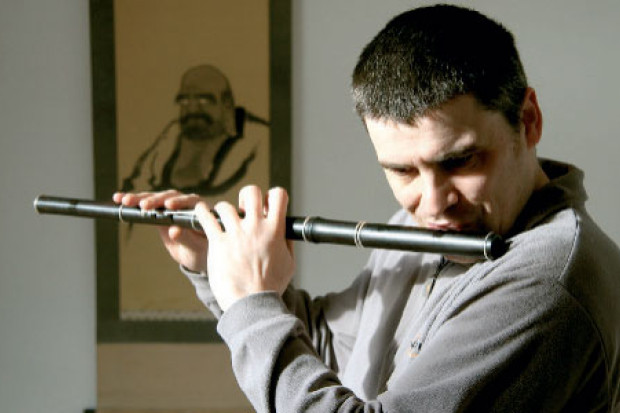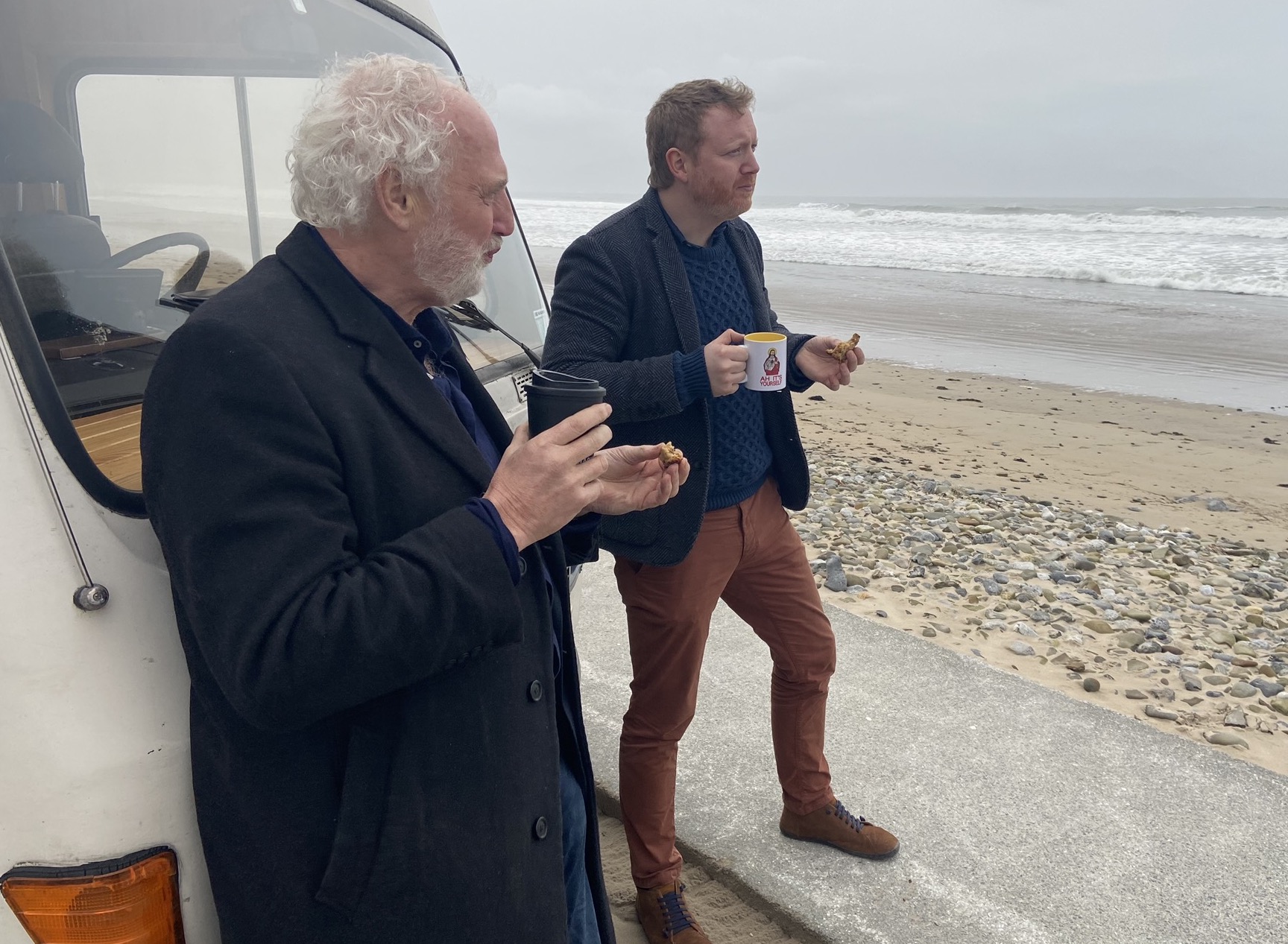
Breanndán and Cormac Ó Beaglaoich on Banna Strand in Kerry
Traditional Music's Slow-Changing World
The six-part series Slí na mBeaglaoich on TG4 is now at its half-way point. The first three episodes have seen father and son Breanndánand Cormac Ó Beaglaoich travel from Kerry through Clare to Galway, stopping in each county to meet other musicians, chat and listen to them play.
Both are well-known musicians themselves, and Breanndán is an experienced television presenter with TG4. Cormac too is a compelling performer, as evidenced by his recent Ireland Performs online concert during the pandemic.
Key to the series is Cormac’s forty-year-old camper van ‘Beauty’ in which they travel, although it breaks down in County Clare in episode 2 and has to be replaced by his brother’s large converted bus, baptised ‘Beast’.
Social stratum
The series is reminiscent of the 1970s programme The Green Linnet that saw Tony MacMahon and Barney McKenna travel around Ireland and Europe in a Citroen 2CV, playing music and reflecting on what they saw. What is curious about Slí na mBeaglaoich is that it too could almost have been recorded a few decades ago. The father and son traverse an artistic social stratum that really has its own rules and hasn’t changed that much. That seems to be what they were looking for, and there is a long history of artists trying to capture that hidden Ireland: in Slí na mBeaglaoich, traditional musicians still sit at their kitchen table, in snugs or outside pubs, play tunes and chat wistfully; conversations wander around perennial questions regarding the best way to play the music; they recall passed on musicians; and debate the merits of tunes, old and new. There is not much enquiry about the world or their lives beyond that.
Neither is Slí na mBeaglaoich an in-depth insight into the musical and personal relationship of a father and son. It does begin with some suggestion that the series will explore that aspect – ‘I wouldn’t be making this trip with Cormac if he didn’t play music – and traditional music at that…’, says Breanndán. He continues: ‘I hope it will deepen the bond between us. He left home years ago and followed his own path… The trip might bring us closer together…’. For Cormac, ‘…it will allow me to spend time with my father, and maybe get to know eachother as adults.’ Maybe such emotional development occurs in a Netflix series, but in Slí na mBeaglaoich their relationship has stayed the same so far, to the viewer anyway, and their focus is outward on music and other musicians rather than on eachother: Breanndán is gregarious, curious; Cormac, quiet and reflective.
From your own heart
The pair begin with a visit to their uncle, Tommy ‘The Lord’ Ó Conchubhair, almost like a touchstone of tradition before they head off. In Blennerville they hear piper Rob Fell, and a song on Banna Strand from Sláine Ní Chathalláin. Breanndán too provides an insight into his own thinking on singing. Asked by Ní Chathalláin why he has not entered the famous Oireachtas sean-nós singing competitions, he says ‘I never felt I had a good grasp of the sean-nós… and I don’t like competitions because it’s only someone else’s judgement on something you’re doing from your own heart’.
There’s an interesting interview in Listowel with accordionist Graham Guerin. The music of north Kerry has been overshadowed by the more famous Sliabh Luachra area but the musicians in the north are beginning to raise awareness of the local repertoire again, and exploring the connection with County Clare across the water. Traditional music in our time is an ever expanding world of micro musics with decades of culture just under ground waiting to be discovered.
In Clare, they visit farmer and fiddle-player Mark Donnelan for some of the sweetest music in the show to date, a set of two reels with his neice Eimear Donnelan on concertina and nephew Brian Donnelan on piano. While sometimes the tunes are introduced, I miss the fact that the series doesn’t tell you on the screen what they are playing. Breanndán and Cormac meet so many musicians and hear such a diversity of music that it’s rich territory for anyone wanting to pick up new tunes or songs.
The duo also visit Patsy O’Grady’s renovated cowshed in Kilmaley, Co. Clare, which doubles as a spot for music and set dancing. O’Grady describes his home as a ‘rambling house’; Donnelan and Cormac join in the session while Breanndán dances a set with locals. In Corofin, there’s exciting dancing from Stephanie Keane to Cormac’s concertina in the van, and the vehicle shakes perilously from side to side, like a scene from Fr Ted. There’s also a lovely set of music – the ‘Ireland Wedding March’ and ‘The Boys of Ballisodare’ reel – from cellist Sharon Crowley, her sister Eimear on fiddle, and cousin Elaine Hogan on harp, in her uncle’s house in Glenquin, which happens to be Fr Ted’s house.
As the series reaches Galway, it has settled down as basically a series of performances strung together by the travel of Breanndán and Cormac, but the father-and-son interludes become less substantial and are generally just a couple of lines saying where they will go next. In Carna, the performance by young singers Caoimhe and Séamus Ó Flatharta stands out. Sitting side by side on the bus, the pair sing sean-nós with close harmony, a rare musical approach and a direct influence from their singing in English, they tell Breanndán.
Wildness
We certainly warm towards the simple format over the three episodes, but the programme fails to draw in what it seems to want to capture, which is the spontaneous wildness and fun that tends to appear at traditional music occasions, not to mention in the freedom of travel. Instead, conversation can be stilted and guests make general comments that don’t particularly add to our understanding of the music. In a phrase, there’s not much craic. As with the recent Gaeltacht 2020 series on TG4, the show seems to lack some sort of central driving conviction or perspective – which is surprising because both musicians surely have that. Some comments by Breanndán about female musicians – that ‘sometimes a person can use their beauty to get recognition or be noticed’ – are also very dated and it is surprising that the producers, Tyrone Productions, chose to keep that in.
What Slí na mBeaglaoich does have is real archival value as it captures a long list of today’s musicians in their environs around the country. It shows us that, despite all the change in Ireland, the culture of traditional music is astonishingly robust, and who could say that even a pandemic will change that.
Slí na mBeaglaoich is broadcast on Sundays on TG4 at 9.30pm. The first three episodes are available at www.tg4.ie.
Published on 13 May 2020
Toner Quinn is Editor of the Journal of Music. His new book, What Ireland Can Teach the World About Music, is available here. Toner will be giving a lecture exploring some of the ideas in the book on Saturday 11 May 2024 at 3pm at Farmleigh House in Dublin. For booking, visit https://bit.ly/3x2yCL8.










